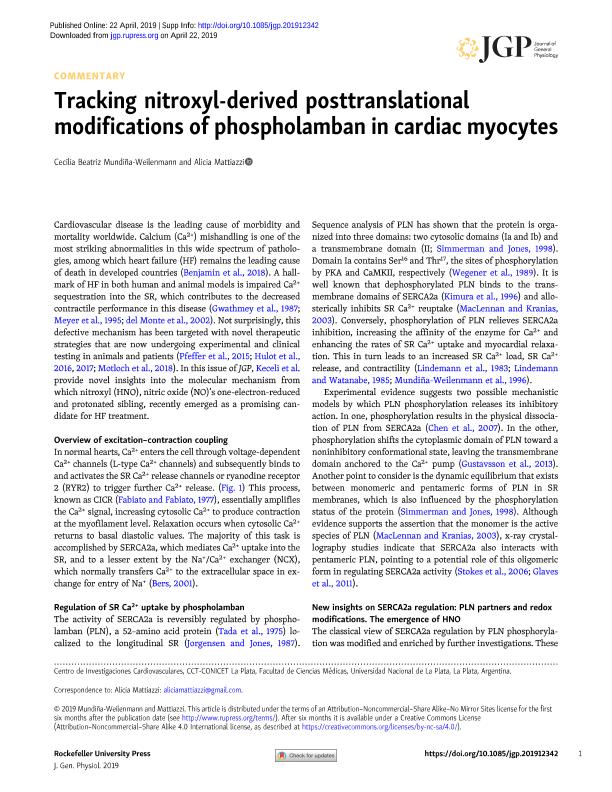Artículo
Tracking nitroxyl-derived posttranslational modifications of phospholamban in cardiac myocytes
Fecha de publicación:
22/04/2019
Editorial:
Rockefeller University Press
Revista:
Journal Of General Physiology
ISSN:
0022-1295
Idioma:
Inglés
Tipo de recurso:
Artículo publicado
Clasificación temática:
Resumen
Cardiovascular disease is the leading cause of morbidity and mortality worldwide. Calcium (Ca2+) mishandling is one of the most striking abnormalities in this wide spectrum of pathologies, among which heart failure (HF) remains the leading cause of death in developed countries (Benjamin et al., 2018). A hallmark of HF in both human and animal models is impaired Ca2+ sequestration into the SR, which contributes to the decreased contractile performance in this disease (Gwathmey et al., 1987; Meyer et al., 1995; del Monte et al., 2002). Not surprisingly, this defective mechanism has been targeted with novel therapeutic strategies that are now undergoing experimental and clinical testing in animals and patients (Pfeffer et al., 2015; Hulot et al., 2016, 2017; Motloch et al., 2018). In this issue of JGP, Keceli et al. provide novel insights into the molecular mechanism from which nitroxyl (HNO), nitric oxide (NO)´s one-electron-reduced and protonated sibling, recently emerged as a promising candidate for HF treatment.
Palabras clave:
NITROXYL
,
PHOSPHOLAMBAN
,
CARDIAC CONTRACTILITY
Archivos asociados
Licencia
Identificadores
Colecciones
Articulos(CIC)
Articulos de CENTRO DE INVEST.CARDIOVASCULARES (I)
Articulos de CENTRO DE INVEST.CARDIOVASCULARES (I)
Citación
Mundiña, Cecilia Beatriz; Mattiazzi, Ramona Alicia; Tracking nitroxyl-derived posttranslational modifications of phospholamban in cardiac myocytes; Rockefeller University Press; Journal Of General Physiology; 151; 6; 22-4-2019; 718-721
Compartir
Altmétricas




